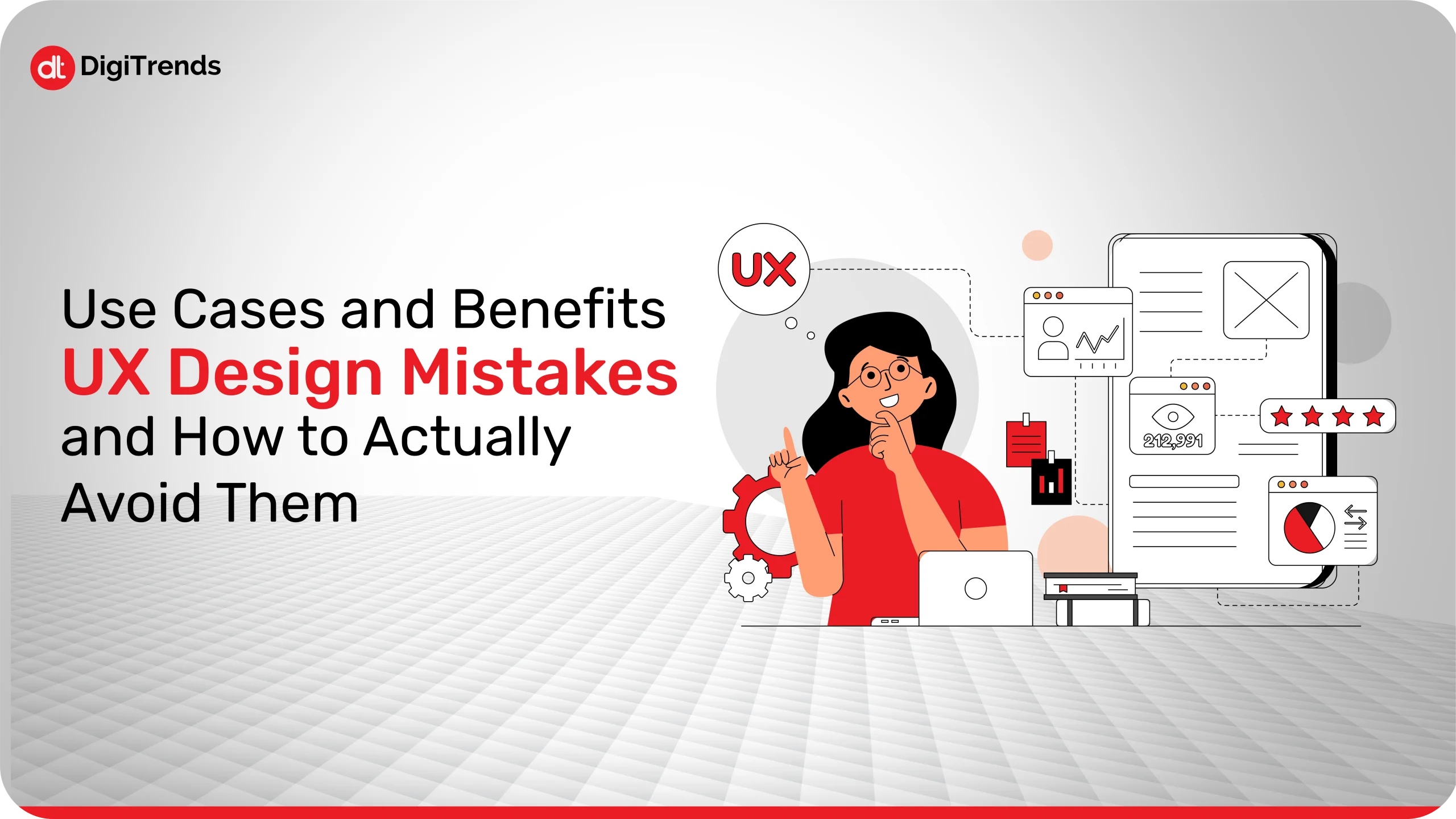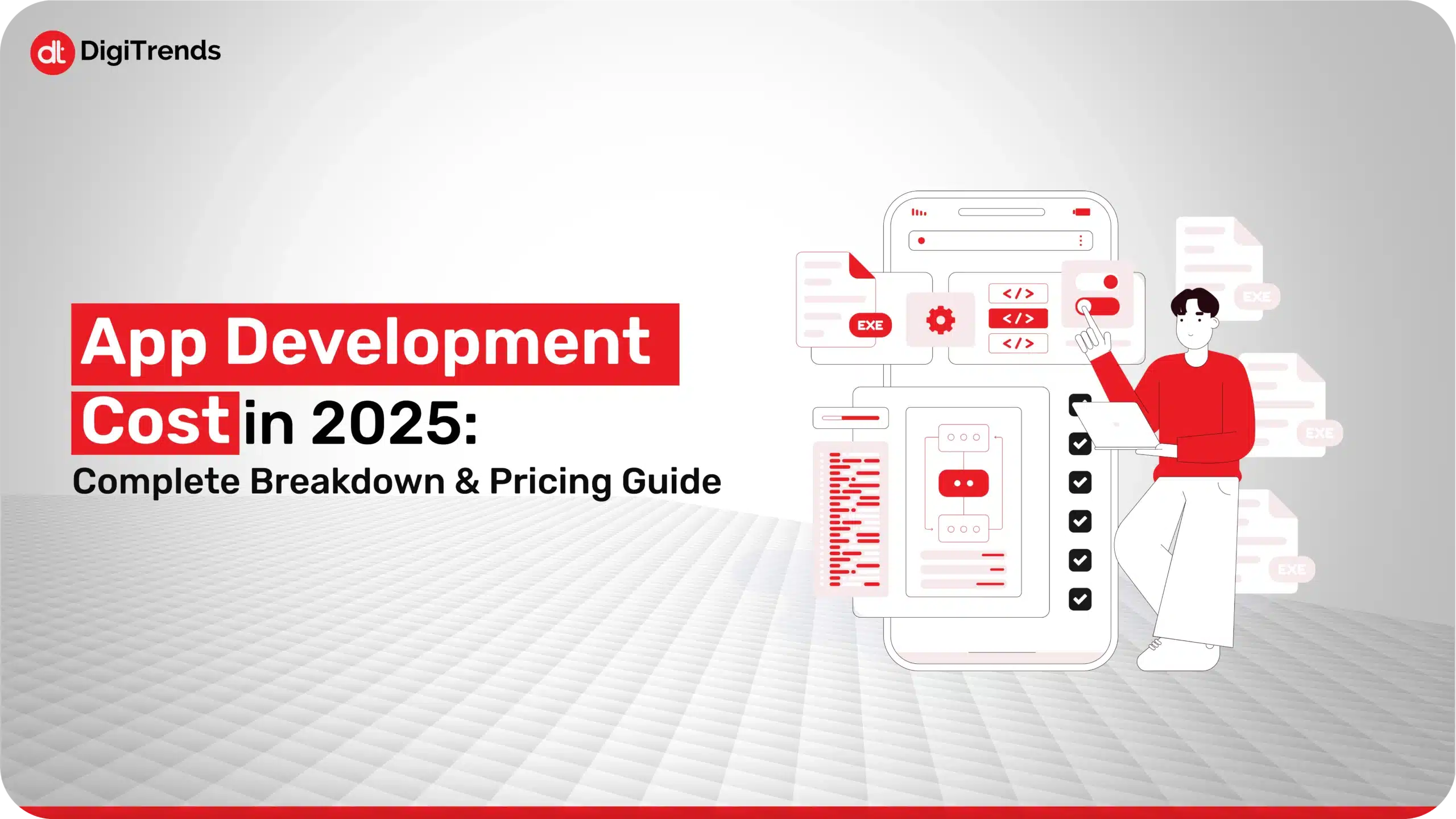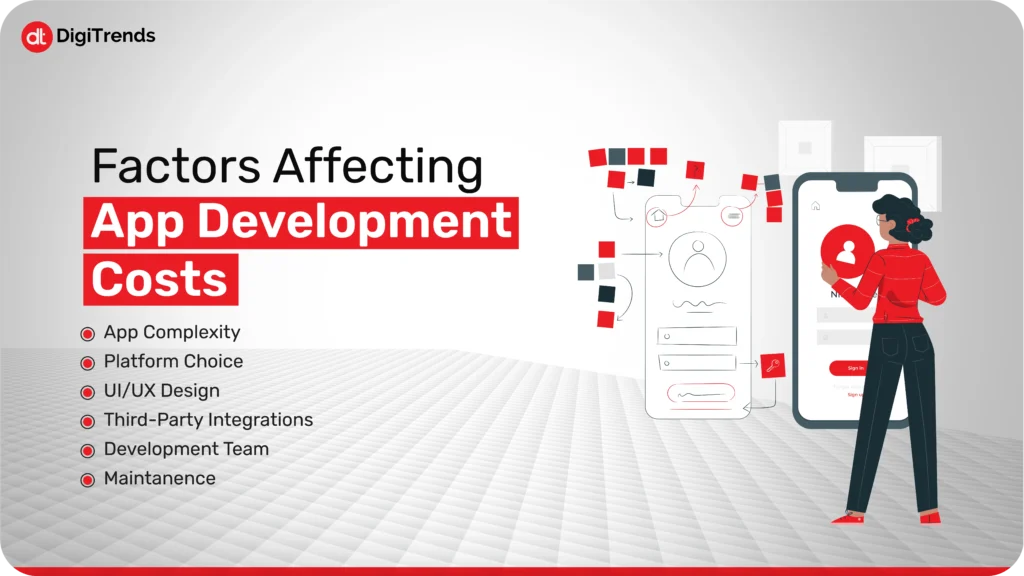
The Most Common UX Design Mistakes and How to Actually Avoid Them
Explore the most common UX design mistakes that contribute to a bad user experience and the mistakes that push users to bounce from the app.
Continue Reading
Want to know how much app development costs in 2025?
Nowadays, there are always new technologies coming forward, and due to that, it is not easy to get a straightforward number for app development costs. Whether it is AI integrations, cross-platform capabilities, possibilities, and prices are rapidly diversifying for app development in 2025.
Users now like to use fast apps that have a modern design and can offer personalized experiences too. That’s why understanding the true cost of app development isn’t just about numbers; it’s about knowing where to invest, what to prioritize, and how to avoid hidden expenses. Whether you’re building a simple MVP or a feature-rich platform, this guide will help you make informed choices every step of the way.
It doesn’t matter if you are a startup brand or a completely established business looking to develop an app in 2025. This blog is going to provide a complete breakdown of the app development cost. From design to the features and functionalities, you will get to know everything you need to consider when planning to develop an app in 2025.
As of June 2025, there are nearly 4 million apps available across Google Play and the App Store, according to Statista. In such a competitive market, you don’t just need a good idea; you need to design your app’s features, functionality, and user experience to meet the expectations of the users in 2025.
It is no secret that technology is rapidly growing, and multiple advancements change the users’ expectations almost every month. This means that your app needs to be fast, intuitive, and intelligent to be successful, and to make an app like that, you need to plan your budget accordingly.
Let’s find out the app development costs by its complexity, type, features, and more.
The process of app development is made up of several components (but it depends on the scope of your project, feature set, and strategy of development, and how many of them are involved).
Let’s have a look at the app development cost breakdown:
| Component | Estimated Cost (USD) | Description |
| Planning | $2,000 – $15,000 | Requirements gathering, product roadmap, user flow diagrams, and MVP definition |
| UI/UX Design | $3,000 – $50,000 | Wireframes, mockups, user journey design, visual branding, interaction design |
| Frontend Development | $5,000 – $60,000 | UI implementation for chosen platforms (iOS, Android, Web) |
| Backend Development | $8,000 – $70,000 | Servers, databases, APIs, user authentication, data management |
| Core Features & Functionality | $3,000 – $100,000 + | In-app messaging, push notifications, payments, maps, camera access, etc. |
| Testing & QA | $2,000 – $20,000 | Functionality testing, performance testing, compatibility testing |
| Project Management | $1,000 – $15,000 | Task coordination, sprint planning, client communication, and timeline tracking |
| Deployment & Launch | $500 – $5,000 | App store submissions, compliance checks, and publishing guidelines |
| Maintanence | $2,000 – $20,000/year | Bug fixes, OS compatibility updates, performance optimization, and minor enhancements |
App development costs can range from $15,000 to over $300,000. The costs of your app depend on several factors. You need to understand the type of app you want to build and the features it is going to include to get a clear picture of the cost of your app. Being aware of every component of cost allows you to make decisions based on informed judgments and spend your budget appropriately. With proper strategy and feature prioritization, you can create an app that can bring significant value without spending too much money.
How much does app development cost? There is no one answer; costs vary significantly depending on the type of app you’re building. Various industries have varying requirements in terms of features, security, scalability, and integration, and hence the extent of impact they have on the overall cost of development.
Below is a general cost range for popular app categories in 2025:
| App Type | Estimated Cost (USD) |
| E-commerce App | $60,000 – $200,000 |
| Healthcare App | $80,000 – $300,000 + |
| Social Networking App | $100,000 – $400,000 + |
| On-Demand App | $50,000 – $150,000 |
| Educational App | $40,000 – $120,000 |
| Fitness/Wellness App | $40,000 – $100,000 |
| Fintech App | $100,000 – $300,000 + |
| Travel & Booking App | $60,000 – $180,000 |
This table is an overview of the types of apps and their costs. All types of apps require different kinds of functions, design, and features; hence, the cost of creating different types can vary. For example, social network and fintech applications typically necessitate complex backend infrastructure, real-time data management, and security, which increase the costs. Apps in the learning or fitness segment are meanwhile more modular and scalable, and can thus be cheaper in the beginning stages.
Keep in mind that these are average ranges. Final costs will still depend on your specific feature set, design requirements, platform(s), and development approach. Knowing where your app fits in helps set realistic expectations and guides smarter budgeting decisions from day one.

While having a general cost estimate is helpful, the average app development cost in 2025 is heavily influenced by several key factors. Understanding these elements can help you control expenses and prioritize what truly matters to your users and business goals.
The more features your app includes, the higher the cost. A basic app with simple functionality (like a calculator or to-do list) is much cheaper to build than a complex, multi-feature platform (like a social network or eCommerce app). Complexity includes:
Deciding whether to build for iOS, Android, or both significantly impacts your cost. Native development (separate codebases for each platform) is more expensive than cross-platform solutions like Flutter or React Native, which allow a single codebase for multiple platforms.
A visually appealing and user-friendly design can require more time and budget, especially if your app demands custom animations, branding elements, or adaptive design for various screen sizes. A strong UI/UX can boost engagement but requires experienced designers and iterative testing.
Adding third-party services such as payment gateways, analytics tools, maps, social logins, or CRM systems adds both functionality and cost. These integrations often require licensing fees and additional development time for secure and seamless implementation.
The type of development team you choose affects both quality and cost:
Geographic location also plays a role, as hourly rates differ across regions.
Development doesn’t stop after launch. Regular updates, bug fixes, security patches, and compatibility upgrades are essential for long-term success. Typically, maintenance costs range from 15% to 25% of the initial development cost annually, and skipping this can lead to performance issues..
Understanding these factors upfront empowers you to make smarter decisions, optimize your budget, and ensure your app meets both user expectations and business objectives.
Choosing the right development partner is crucial; it impacts not just your budget, but the quality, timeline, and long-term scalability of your app. If you’re looking for a team that blends strategy with execution, companies like DigiTrends can help turn your vision into a high-performing reality.
Even with careful budgeting, many businesses underestimate the hidden costs that come with building and maintaining an app. These often-overlooked app development expenses can add up quickly if not accounted for from the start.
Publishing your app on the Apple App Store or Google Play comes with recurring fees. Apple charges $99/year for a developer account, while Google Play requires a one-time registration fee, but there are other fee requirements after the app goes live.
Backend servers, databases, and cloud storage (like AWS, Google Cloud, or Firebase) come with ongoing costs, especially as your user base and data grow.
APIs for maps, payment gateways, analytics tools, or chat services often have usage-based pricing tiers, which can become significant as traffic increases.
Each new iOS or Android update may require changes to your app to maintain performance and compliance, adding to long-term maintenance costs.
Implementing proper encryption, GDPR or HIPAA compliance (if applicable), and data protection protocols can require legal consultation and specialized development.
Building the app is only part of the equation; promoting it is another major investment. From ASO and paid advertising to influencer campaigns and launch strategies, marketing costs are often underestimated.
Accounting for these hidden costs upfront helps you plan a more realistic budget and avoid roadblocks down the line. A well-prepared strategy ensures your app doesn’t just launch, it grows, performs, and stays secure over time.

App development can be a significant investment, but smart decisions at each stage can help you reduce costs without compromising on quality. Here are key strategies that successful teams use to stay efficient and budget-conscious in 2025:
Start with a core set of features that solve your users’ primary problem. An MVP lets you test your idea in the real market, gather feedback, and make data-driven decisions before investing in full-scale development.
Leverage existing tools and frameworks instead of building every component from scratch. Pre-built modules for payments, chat, or analytics can significantly reduce development time and cost.
Choose a tech stack that balances flexibility, scalability, and cost-efficiency. For many apps, cross-platform frameworks like Flutter or React Native offer great performance while cutting down on development time for multiple platforms.
Clear timelines, well-defined deliverables, and regular communication can prevent costly delays and scope creep. Agile methodologies and tools like Jira or Trello help keep development on track and aligned with business goals.
Investing in early testing and QA helps catch bugs before they become expensive problems. Automated testing, regular code reviews, and usability testing can save time and rework in the long run.
The right team can make all the difference. Look for developers or agencies with a proven track record, transparent pricing, and a clear understanding of your industry. A well-aligned team reduces miscommunication and boosts productivity, ultimately saving you money.
By applying these strategies, you can build a robust, user-centric app while keeping your development costs under control. Planning smart from the start is the best way to ensure your app is both high-quality and financially sustainable.
Before you jump into development, having a clear and realistic budget plan is essential. A well-prepared budget doesn’t just cover development, it anticipates long-term needs like maintenance, marketing, and scaling. Use this checklist to make sure you’re financially ready to build and sustain your app.
Building an app in 2025 is not just a technical project; it’s a strategic investment. With evolving user expectations, fast-changing technologies, and a highly competitive digital landscape, understanding app development costs is crucial to making informed, future-proof decisions. Whether you’re a startup founder or a business owner looking to digitize operations, a clear view of the cost structure helps you avoid common pitfalls and overspending.
Throughout this guide, we’ve broken down the components that shape app development pricing from the type of app and platform choices to UI/UX design, third-party integrations, and long-term maintenance. We’ve also uncovered hidden costs and shared actionable strategies to reduce unnecessary expenses. With a proper budget plan, smart prioritization, and the right development partner, it’s entirely possible to build a high-quality app that delivers real value, without draining your resources.
As you move forward, keep in mind that app development isn’t a one-time event; it’s a continuous journey. Set realistic goals, allocate wisely, and stay open to feedback and iteration. And if you’re seeking a tech partner who understands both the technical and business side of digital products, teams like DigiTrends can help guide you from concept to launch and beyond.
